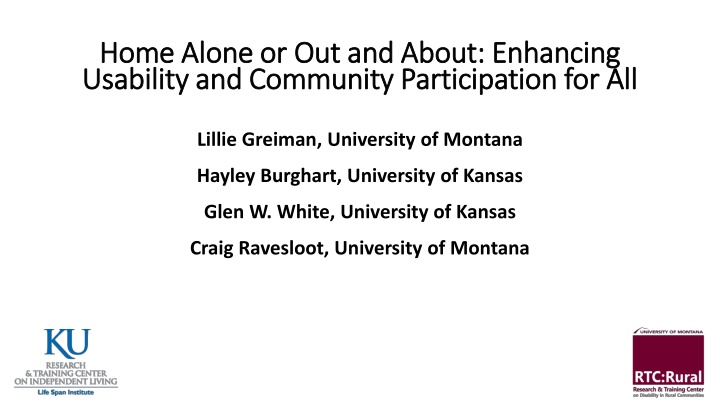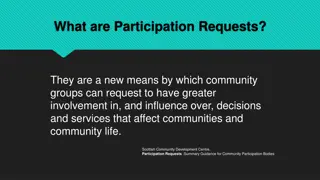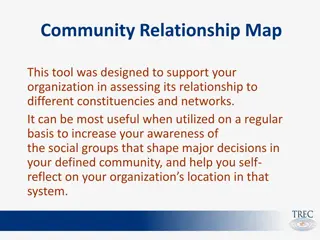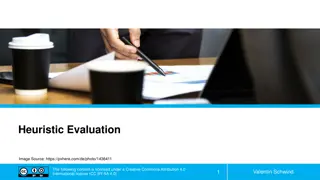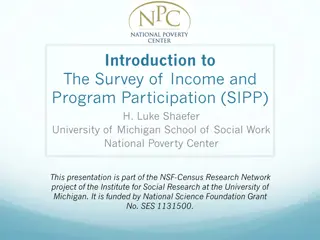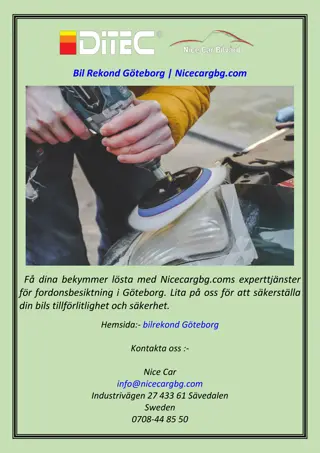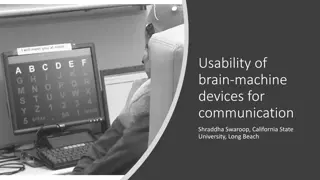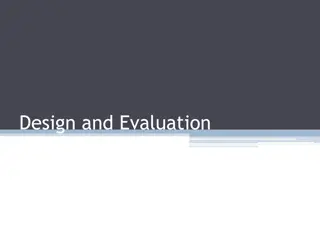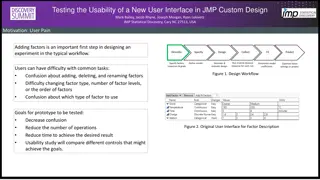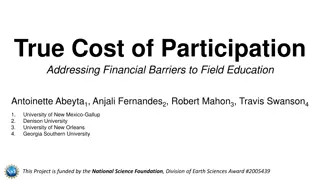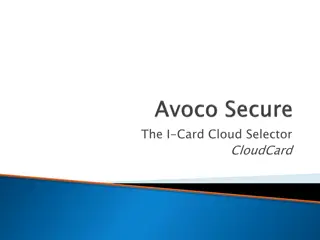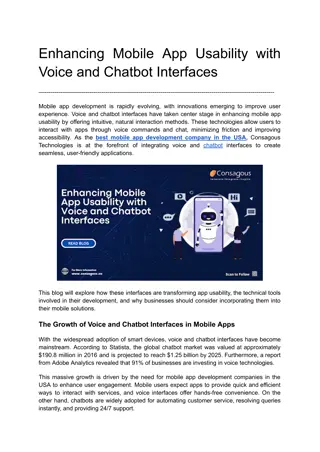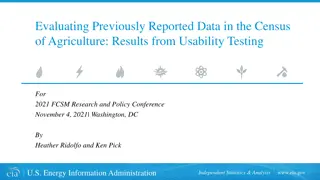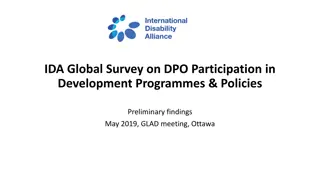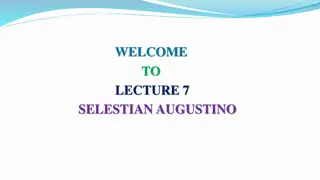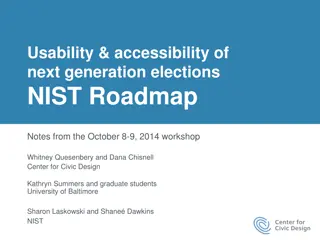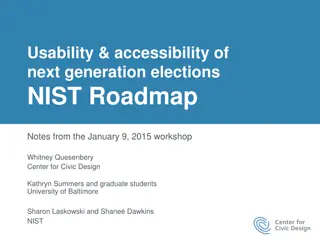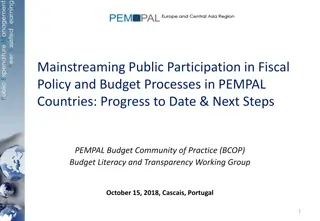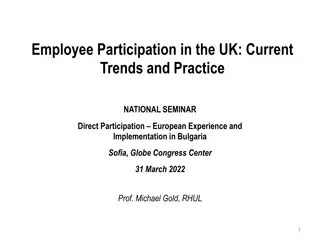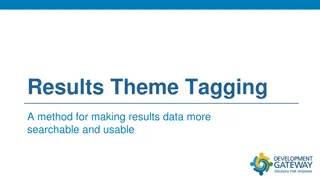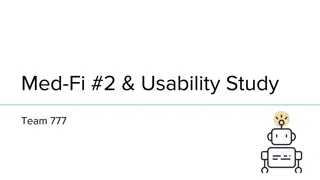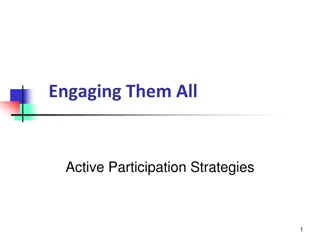Enhancing Home Usability and Community Participation for All
Home Alone or Out and About: Enhancing Usability and Community Participation for All is a research project aimed at empowering individuals with disabilities to improve their home environments and promote community engagement. The Home Usability Program focuses on creating accessible and inclusive homes that meet the needs and desires of residents, emphasizing control and choice in one's living space. Usability and Accessibility are key factors in ensuring that individuals can access suitable housing and modify their current environments for improved functionality and design.
Download Presentation

Please find below an Image/Link to download the presentation.
The content on the website is provided AS IS for your information and personal use only. It may not be sold, licensed, or shared on other websites without obtaining consent from the author.If you encounter any issues during the download, it is possible that the publisher has removed the file from their server.
You are allowed to download the files provided on this website for personal or commercial use, subject to the condition that they are used lawfully. All files are the property of their respective owners.
The content on the website is provided AS IS for your information and personal use only. It may not be sold, licensed, or shared on other websites without obtaining consent from the author.
E N D
Presentation Transcript
Home Alone or Out and About: Enhancing Home Alone or Out and About: Enhancing Usability and Community Participation for All Usability and Community Participation for All Lillie Greiman, University of Montana Hayley Burghart, University of Kansas Glen W. White, University of Kansas Craig Ravesloot, University of Montana
Research and Training Center on Promoting Research and Training Center on Promoting Interventions for Community Living Interventions for Community Living The RTC/PICL started in October 2016 and will continue until late September 2021 This Center is a partnership between the University of Kansas and the University of Montana Glen White and Craig Ravesloot: Co-directors UM is primary on Home Base and secondary on Out and About KU is primary on Out and About and secondary on Home Base
The Home Usability Program The Home Usability Program People with disabilities learn to improve their home environment and thereby promote community participation Empower consumers to evaluate their home environment and provide support to enhance their home s usability Consumers create a home environment that facilitates community participation. Examine the effectiveness of the program for achieving these outcomes
What is Home Usability? What is Home Usability? Our home environments matter. Our homes are where we prepare for our daily lives as well as places to rest and rejuvenate for future participation. Individuals are best able to prepare themselves when they have a home that fits their needs. Home usability is about ensuring that people with disabilities are living in homes that meet their needs, desires and abilities. A usable home is a home where you are in control and have choice concerning all aspects of your home environment.
Usability and Accessibility Usability and Accessibility Usability matters when people either cannot find accessible and affordable housing and must make do with the space they are in, or if accessibility regulations do not address their specific needs and abilities Usability and Accessibility are two sides of the housing coin. Accessibility Towards universal access, improved access for everyone Community focused: measurement, codes and standards Usability Working to improve current home environments Individually focused: form, function and design
Examples Examples The consumer has difficulty entering and exiting her bathtub for bathing. Solution Grab bars and non slip bath mat. Paid for by grant funds and Medicaid Waiver The consumer experiences frustrations with his ability to control his home entrance. Solution the consumer identified the need for a SMART lock system so he can control who comes and goes from his apartment. This was then expanded to an Insteon HUB which allows him to control much more than his front door (i.e. lights and AC). Paid for by Medicaid Waiver The consumer has difficulty getting prepared for her day with her PCA inside her home. Solution During a home visit, the consumer identifies that the bed she is has currently is too large, she would like to downsize to a twin to give her more space in her bedroom. Consumer is not on Medicaid waiver and has very limited resources to contribute.
Community Resources for Home Usability Community Resources for Home Usability Home modification/repair services Funding programs/resources Population specific (e.g. veterans, low income, older adults) Need specific (e.g. ramp programs, home repair services) Fair housing organizations Physical/Occupational therapists Property management companies Cleaning services City officials
Out and About Program Out and About Program Skills training and information sharing to help consumers address barriers to community participation. Consumers face barriers that extend beyond their homes including: Personal barriers such as secondary health conditions Pain, depression, fatigue, pressure sores, the list goes on Environmental barriers outside the home Lack of transportation, inaccessible businesses, etc. Working with CILs to incorporate trainings that provide consumers with the skills to eliminate these barriers to meet community participation goals.
Skills Training Skills Training Goal Setting: Identifying what consumers want to do in their communities, what barriers they are facing, and how they will be able to achieve their goal. Problem-solving: Working with the ILS to set an action plan to address their needs. Connecting consumers with community resources and information and empowering them to be active in achieving their goals. Advocacy: Gaining the skills and knowledge about laws and rights, skills in public speaking and advocating for oneself and other s interests. Networking: Connecting with people in the community, joining social or support groups. Working with peers to achieve goals can provide support and accountability.
Information Sharing Information Sharing Online fact sheets and resources, examples include: What are your rights and when should you state them? Negotiation skills: How to make a business more accessible Cooking and eating well for health Getting and paying for Assistive Technology in your state Tips for online social networking Videos of skills training: Goal setting and tracking progress Print versions and alternate formats of all materials available by working with IL Specialist
Current development: Needs Assessment Current development: Needs Assessment We think that LIVING in the community may be different from PARTICIPATING as an equal member of the community. Seeking the opinions of consumers and CIL staff on one essential question: What skills and information do people need to be as active as they want to be in their community? *The Needs Assessment is available today, if you are interested in providing your opinion on this topic. You will also have the opportunity to enter a drawing for a $100 gift card.
Questions and Discussion Home Usability What is a home usability problem that you ve experienced? What personal/community resources did you use to address your problem? What kinds of creative solutions have you seen working with consumers in their homes? What are the biggest barriers to addressing these needs and how can we address these barriers? Out and About Did addressing this home usability problem help you get out into the community? What other barriers did you encounter out in the community? What resources are available and valuable in your community for overcoming these barriers? What skills and information are essential to have the freedom and choice to be as active as you want in the community?
More discussion questions When it comes to social networking, how can we engage youth and those transitioning from facilities? For example, is social media a useful platform? What barriers might those transitioning face that are different from those who have been living independently?
Thanks for joining us! If you want to continue this discussion, we will have a table at the Mentoring Mixer from 5:30 7:00 We ll continue to unpack these home usability barriers and discuss resources and solutions you have identified Please take a few minutes to complete the brief survey about Home Usability and we are available if you need assistance. If you re interested in providing your opinion on Out and About, come pick up a survey and enter the drawing for $100!
